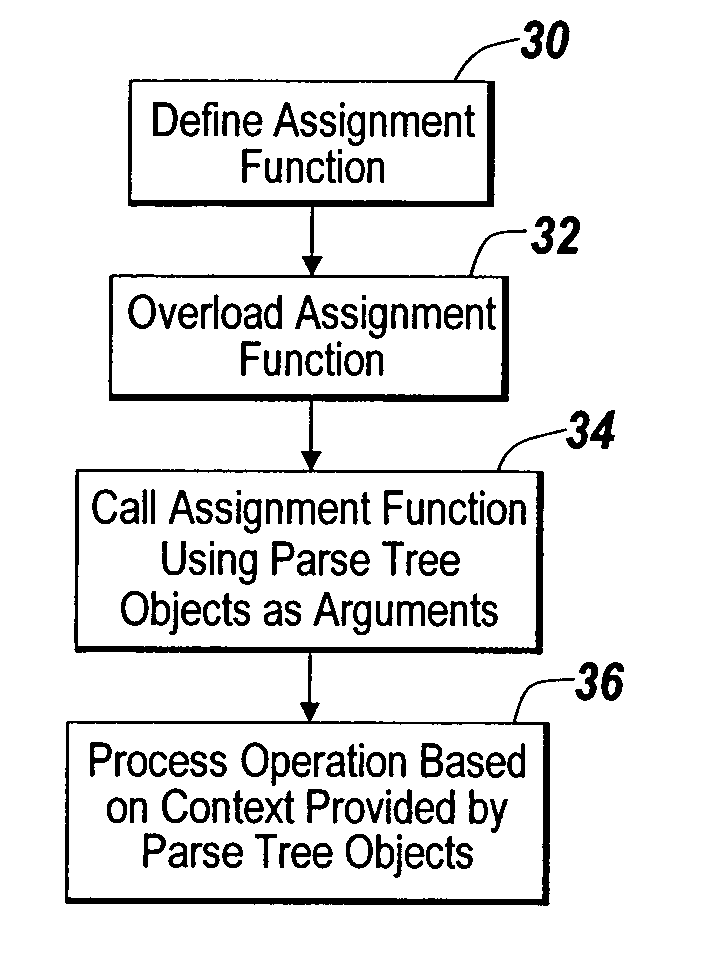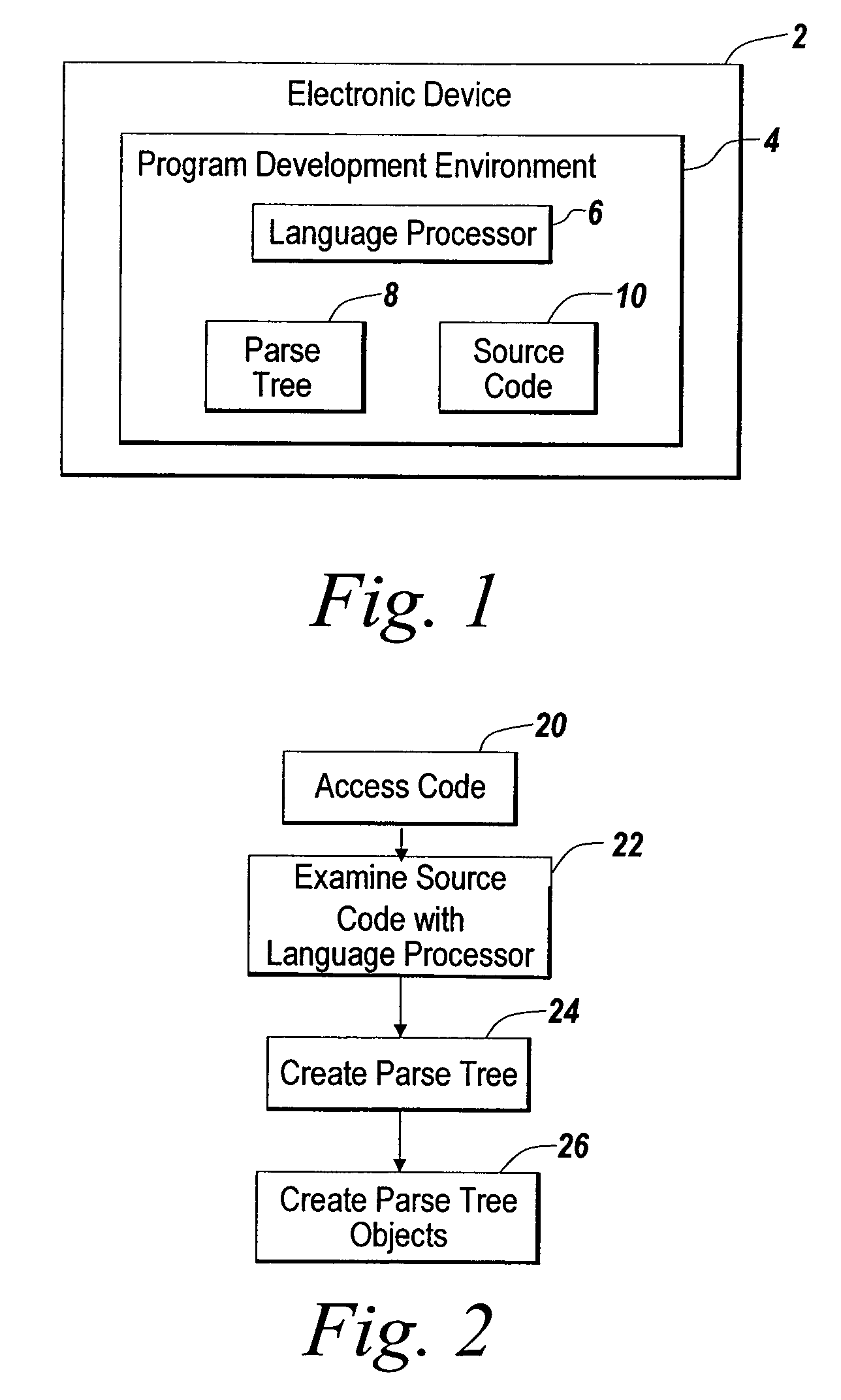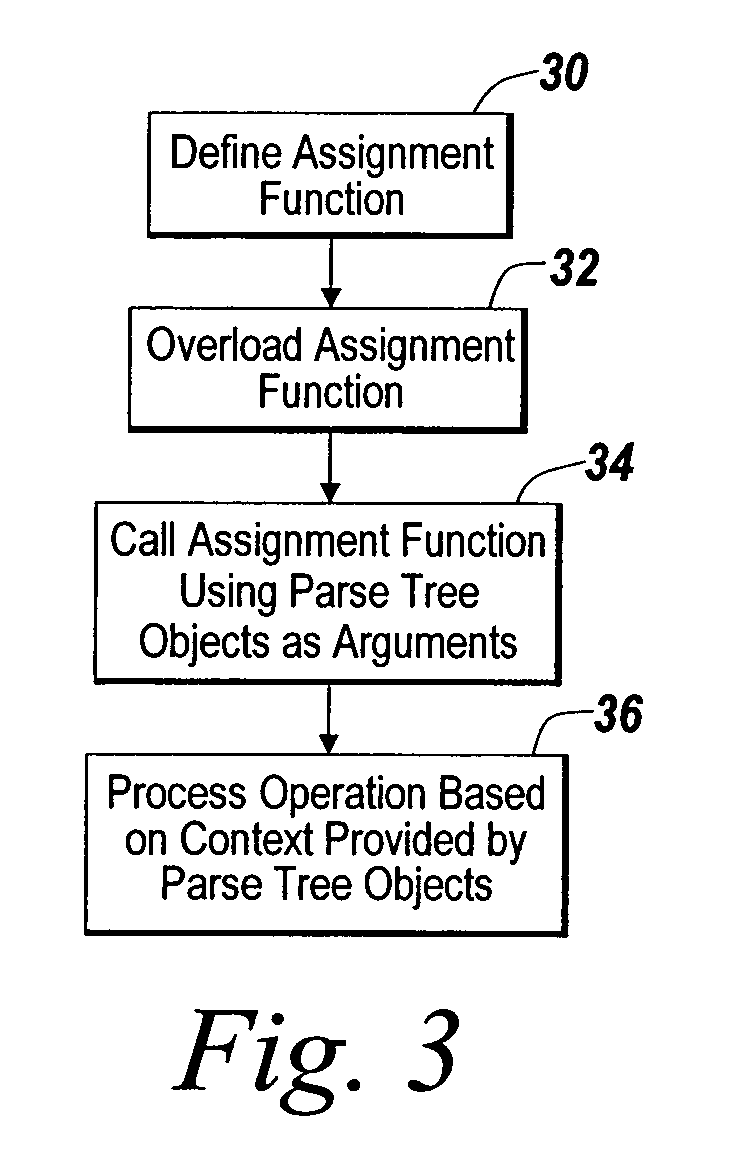System and method for providing context to operator overloading
a technology of operator overloading and context, applied in the field of operator overloading, can solve the problems of not meeting user needs, simulating complicated instructions when simple instructions will do, and no opportunity
- Summary
- Abstract
- Description
- Claims
- Application Information
AI Technical Summary
Benefits of technology
Problems solved by technology
Method used
Image
Examples
example 1
In-Place Operations
[0039]The objects in class C may take up a large amount of memory. For example, the objects may be large matrices containing thousands of elements. Certain kinds of arithmetic on these objects may be done “in place”. For example, an expression such as
[0040]A=A+1
may be computed by adding 1 to each element of A. In conventional operator overloading, however, it is not possible to recognize this important optimization. The above expression would conventionally be evaluated by
[0041]1. Creating a temporary object—T.
[0042]2. Computing the value of A+1 into T.
[0043]3. Freeing the old object A.
[0044]4. Renaming T to A.
The process of object allocation and freeing adds significant overhead to this operation, and doubles the amount of memory needed to carry out this operation. Using the present invention, it is possible to recognize in-place operations. Then a call
[0045]Assign(t1, t2)
to the Assign function would operate as follows:
[0046]1. The kind of the top node of t2 woul...
example 2
Methods that Look Like Properties
[0051]A classic example in object-oriented language textbooks is an object, Pt, that represents a point. It has two properties, x and y, that represent the coordinates of the point. It also has two methods, r and theta, which represent the polar coordinates of the point. So if p is an object of class Pt,
[0052]p.x
[0053]p.y
[0054]p.r( )
[0055]p.theta( )
[0056]may be used to obtain the values of x, y, r, and theta for p. This appears asymmetric to a user viewing the code, so often the properties are given hidden names, and methods are supplied to access x and y as well as r and theta. To set the x, y, r and theta values, four additional methods, setx, sety, etc. are needed to allow the setting of each of these parameters in turn. This is a cumbersome and inefficient way to process simple points.
[0057]Using the methodology of the present invention, it is now possible to allow a user to set each of these values using the natural “dot” notation, but still hav...
example 3
Detailed Version of Previous Example
[0058]The definition of the Assign function for Coords, as described in the previous example may be represented as follows using a language similar to C++ as the Base Language:
[0059]void Coord:Assign(Tree t1, Tree t2
[0060]{[0061]Coord temp;[0062]switch(kind(t2))[0063]{[0064]case DOT:[0065]if(right(t2).isname(“x”))[0066]{[0067]temp=Val(left(t2)).get_x( );[0068]break;[0069]}[0070]similarly with y, r, and theta[0071]default:[0072]temp=Val(t2);[0073]break;[0074]}[0075] / * at this point, temp is defined * / [0076]switch(kind(t1))[0077]{[0078]case DOT:[0079]if(right(t1).isname(“x”))[0080]{[0081]Val(left(t1)).set_x(temp);[0082]break;[0083]}[0084]similarly with y, r, and theta[0085]default:[0086]Assign(t2, temp);[0087]}
[0088]}
Much of the above logic may be carried out at “compile time”, thus leading to efficient output code.
PUM
 Login to View More
Login to View More Abstract
Description
Claims
Application Information
 Login to View More
Login to View More - R&D
- Intellectual Property
- Life Sciences
- Materials
- Tech Scout
- Unparalleled Data Quality
- Higher Quality Content
- 60% Fewer Hallucinations
Browse by: Latest US Patents, China's latest patents, Technical Efficacy Thesaurus, Application Domain, Technology Topic, Popular Technical Reports.
© 2025 PatSnap. All rights reserved.Legal|Privacy policy|Modern Slavery Act Transparency Statement|Sitemap|About US| Contact US: help@patsnap.com



